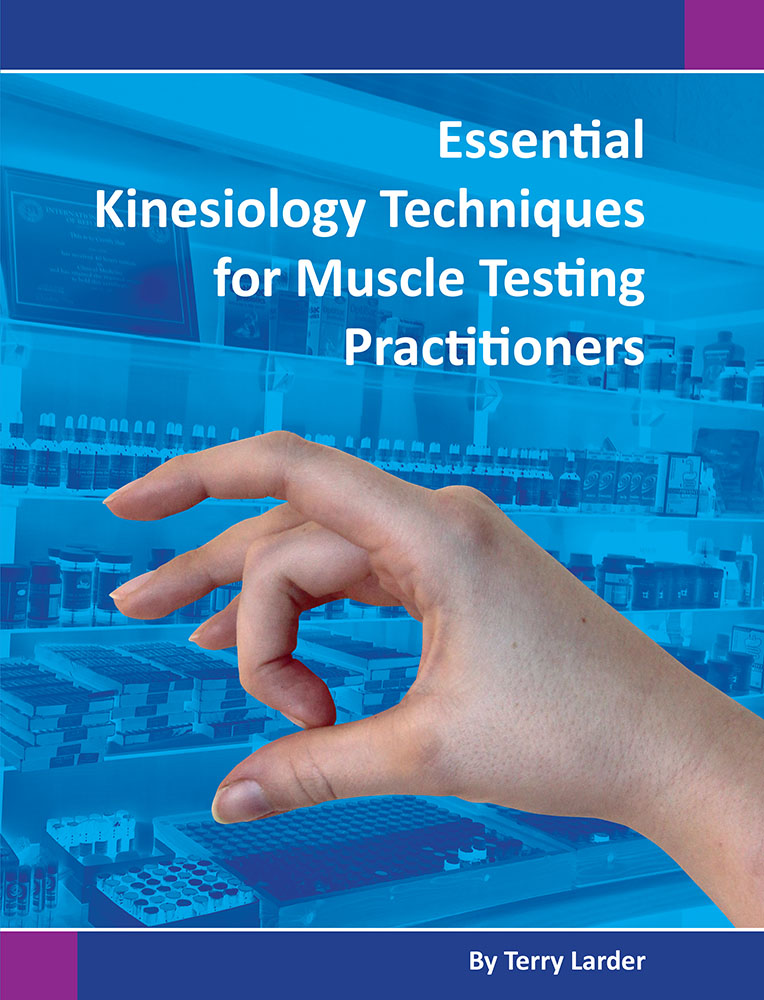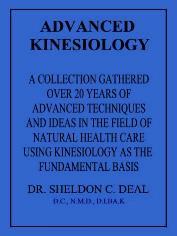Description
by Terry Larder
For the Author’s page. click here.
For the Author’s book page, click here.
Essential Kinesiology Techniques for Muscle Testing Practitioners
By Terry Larder
Table of Contents
Section’s Overview
Acknowledgements
Prologue
Glossary
Start As You Mean To Go On
Why Muscle Response Testing Works
A Blueprint for Client Management
Finger Modes
Circuit Retaining Mode
Hand Modes – Quick Reference
Rules for Therapy Localisation, Circuit Locating and Challenge
Stacking
- Electromagnetic Imbalances and Corrections
- Emotional Imbalances and Corrections
- Biochemical Imbalances and Corrections
- Structural Imbalances and Corrections
- General Imbalances and Corrections
Quick Reference Tables
Electromagnetic Finger Mode Section
Electromagnetic Imbalances – The Start of Disease?
Short cut for testing if electromagnetic imbalances are online
Cloacal Reflexes
Hyoid
Centring
To Test if the Person’s Environment is Causing Them Stress
Blood Chemistry
Ionisation
Alarm Points
Scars
Chakras – Pre and Post Ganglionic Technique
Aura Leaks
Walking Gait
How to Reset the Biological Clock
Pitch Roll Yaw and Tilt
Emotional Finger Mode Section
Addressing Matters of the Mind
Verbal Challenges
Alarm Points and the Emotional Finger Mode
Techniques to Diffuse Negative Thoughts
Fundamental Conflict/Psychological Reversal
Eye Rotations
Temporal Tap
Dispelling Fears & Phobias
Rationale
A Great Anchoring Technique
Emotional Bruising Technique
S.T.O. Technique
Summary of Addressing Matters of the Mind
Spondylogenic Reflex to the Diaphragm
Imbalances That May Occur Simultaneously
Biochemical Finger Mode Section
What Does it Mean When the Biochemical Finger Mode Shows?
Why Give Nutrition?
Nutritional Rewarding
Using Test Vials
Vitamins in Foods
Minerals in Foods
Ridler’s Reflexes
Digestive Insufficiency
Allergies
30 Second Allergy Balance
Use the Alarm Points to Identify Organs/Systems that Need
Nutritional Support
Toxicity Talk
Liver Support
Liver and Thymus Tap connection
Kidney Support
Lung Support
The Colon
The Skin as an Eliminatory Organ
Extracellular Matrix
Heavy Metal Toxicity
How to Find and Address Heavy Metal Toxicity
Amalgam Removal
Candida Albicans
Candida Toxins
Addressing Candida Overgrowth
Immune System Weak
Leaky Gut
Beneficial Bacteria Deficiency
Microbiome Finger Mode
Intestinal Parasites
Understanding Insulin
Structural Finger Mode Section
Ileocaecal Valve (ICV) Syndrome
More on Peristalsis
Ileal Brake Challenge for Fats
Ileal Brake Challenge for Carbohydrates
Gastric-Colic Reflex
Balancing the Vagus Nerve
Chronic Valves
Sub Clinical Hiatal Hernia.
Lateral Atlas
Moving Bones
How to Find a Spinal Misalignment
Correcting a Spinal Misalignment
Moving a Vertebra Using its Lovett ‘Brother’
Correcting a Vertebra Using Sound
Fixations of the Vertebrae
Ligament Stretch
Spinal Torque
Dural Torque
Temporomandibular Joint Dysfunction
Masseter and Buccinator
Temporalis Muscles
Medial Pterygoids
Lateral Pterygoids
TMJ Protocol Summary
How to Check Dental Splints..
Ligament Interlink
Retrograde Lymphatics
Anterograde Lymphatics
Shock Absorber
Use the Alarm Points to Find Muscles Involved with a Lesion
Reactive Muscles
Correcting the Sacrum
Sacral and 5th Lumbar Fixation
Cranial Faults
Methods to Find and Correct Unspecified Cranial Faults
Sphenobasilar Compression Cranial Fault
Inferior Occiput
Universal Cranial/Occiput Fault
Sagittal Suture Cranial Fault
Temporo-sphenoid Line Fault (Pineal Gland Fault)
Jammed Intermaxillary and Palatomaxillary Sutures
Cranial Fault for Learning Disabilities
Jammed Symphysis Menti
Glabella Cranial Fault
Pituitary Gland Structural Fault
Temporal Bulge Cranial Fault
Parietal Descent
Pelvic Categories
Category I
Category II
Category III
Pelvic Categories Quick Reference
Uterine Lift and Functional Short Leg
Cystitis Technique
More on Muscles
Surrogate Muscles
Aerobic and Anaerobic Testing
Fix it in Motion
Sustained Testing
Bilateral Piriformis May Indicate a Jaw Problem
Bilateral Gluteus Maximus
General Section
Pre-stressing
Pulse Synchronisation
Injury Recall Technique
Testing the Endocrine System
Pituitary
Thyroid
Thymus
Hypothalamus
Pineal
Parathyroids
Adrenals
Procedures for Assessing and Correcting the Endocrine System
How to Treat Endocrine Imbalances
Test for Adrenal Fatigue and Corrections That Don’t Last
Past Trauma Resolution
Beginning and End (B & E) Points
‘Changing the Fuse’ with B & E Points
Additional Pointers
B & E Points and Neurotransmitter Production
B & E Points as a Correction in its Own Right
GV 20 as a Master B & E Point (Deal)
B & E Points, Injury Recall Technique and Emotions
B & E Points for Reducing Pain
Lateral Sway
Peripheral Vision Technique
Vision – Far and Near Sightedness
Blood Pressure Balance
Universal Application of Sagittal Suture Spread and Tap
List of Protocols in Categories
List of Suggested Procedures





